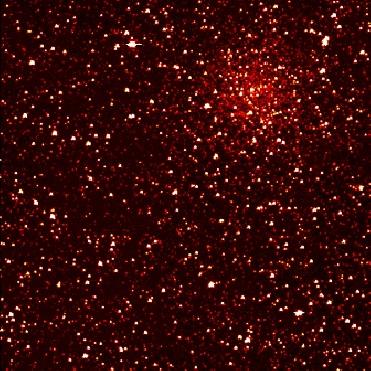
This image zooms into a small portion of Kepler's full field of view -- a vast, 100-square-degree patch of sky in our Milky Way galaxy. Photo Credit: NASA
CALIFORNIA (BNS): On a mission to find out Earth-like planets in our galaxy, NASA’s Kepler mission has taken its first images of the star-rich sky which would help scientists trace hundreds of planets circling the stars.
The new “first light” images show the mission's target patch of sky – a vast starry field in the Cygnus-Lyra region of our Milky Way galaxy. One image shows millions of stars in Kepler's full field of view, while two others zoom in on portions of the larger region, NASA said on Thursday.
“Everything about Kepler has been optimized to find Earth-size planets,” said James Fanson, Kepler's project manager at NASA's Jet Propulsion Laboratory California. “Our images are road maps that will allow us, in a few years, to point to a star and say a world like ours is there.”
A new image taken by the spacecraft shows its entire field of view – a 100-square-degree portion of the sky, equivalent to two side-by-side dips of the Big Dipper. The regions contain nearly 14 million stars, more than 100,000 of which were selected as ideal candidates for planet hunting, the space agency said.
Two other views focus on just one-thousandth of the full field of view. In one image, a cluster of stars located about 13,000 light-years from Earth can be seen in the lower left corner. The other image zooms in on a region containing the star, Tres-2, with a known Jupiter-like planet orbiting every 2.5 days, it said.
“Kepler's first glimpse of the sky is awe-inspiring,” said Lia LaPiana, Kepler's programme executive at NASA Headquarters in Washington. “To be able to see millions of stars in a single snapshot is simply breathtaking,” he added.
“It's thrilling to see this treasure trove of stars,” said William Borucki, science principal investigator for Kepler at NASA's Ames Research Center in California. “We expect to find hundreds of planets circling those stars, and for the first time, we can look for Earth-size planets in the habitable zones around other stars like the sun.”
The spacecraft will spend the next three-and-a-half years searching over 100,000 pre-selected stars for signs of planets. It is expected to find a variety of worlds, from large, gaseous ones, to rocky ones as small as Earth, NASA said.
To find the planets, Kepler will stare at one large expanse of the sky for the rest of its lifetime, looking for periodic dips in starlight that occur as planets circle in front of their stars and partially block the light. Its 95-megapixel camera, the largest ever launched into space, can detect tiny changes in a star's brightness of only 20 parts per million, the space organization said.
Scientists and engineers will spend the next few weeks calibrating Kepler's science instrument, the photometer, and adjusting the telescope's alignment to achieve the best focus. Once these steps are complete, the planet hunt will begin.
 Previous Article
Previous Article Next Article
Next Article












The Indian Air Force, in its flight trials evaluation report submitted before the Defence Ministry l..
view articleAn insight into the Medium Multi-Role Combat Aircraft competition...
view articleSky enthusiasts can now spot the International Space Station (ISS) commanded by Indian-American astr..
view article